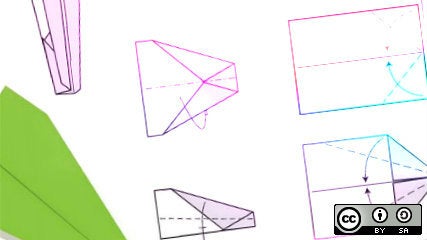Those who are new to the idea of open organizations (and open source in general) may have a difficult time envisioning how the open organization principles are incorporated as part of an existing culture. Many of these folks may not be participating in—or even have had extensive exposure to—an open organization, and therefore may not have ready access to a live community from which to observe and from which to learn.
This exercise allows participants to create their own communities and then evaluate them with respect to the Open Organization Maturity Model. It is intended to allow participants to gain an understanding of how open organization principles could be implemented within a culture. The process of creating a community allows the participants to clearly understand how the community works, providing a solid foundation for the process of evaluating the community with respect to the Open Organization Maturity Model. The application of the model provides participants the opportunity to test their understanding of open organization principles by evaluating their inclusion in a known environment.
Facilitation steps
Phase 1: Imagine a new society
In this phase of the exercise, participants will collaborate in teams to imagine a new society. Divide the group into teams with an equal number of members.
Step 1. Explain the exercise's hypothetical premise to participants. Say something like: "You are part of a team of 50 people that is going on an expedition to Mars. The team will be responsible for creating a new community on Mars including terraforming, exploring, and establishing a government. You are responsible for defining the culture and government for the new community. In this assignment, you must define a society built on open source principles. How do people act? How do people govern themselves? What kind of institutions/organizations do you build?"
Step 2. Ask participants to imagine a system of government for their new society. Say something like: "Describe how your community will be run. Will your society be a democracy? A monarchy? A dictatorship? A mixed government that combines elements of several systems? What kind of a constitution will you have? How will your government make decisions? Define a motto for your government. Explain your choices." Allow at least 10 minutes for this step.
Step 3. Ask participants to imagine a legal system for their new society. Say something like: "Your community must have rules. Define a list of at least 10 rules all community members must follow. Provide an explanation for each rule. You will also need a legal system in order to handle those who break the rules or harm others. What sort of a system will you use? How will you address conflict resolution? How will you enforce the rules of your society?" Allow at least 10 minutes for the step.
Step 4. Ask participants to imagine an economic system for their new society. Say something like: "Your society's economy determines how resources (goods and services) are allocated. What systems will be in place for the production and distribution of resources? What form of currency will you use? What structure will you use for distributing resources? Does the government own all resources and means of production? Are the resources owned by private individuals? Is it a blend? How do people earn a living? What industries and careers are available?" Allow at least 10 minutes for this step.
Step 5. Ask participants to imagine various social programs their society will offer. Say something like: "Social programs exist to ensure that all members of a community are provided for. How will your government care for the poor? How will your community be housed? What rights to community members have? What are the obligations of all community members?" Allow at least 10 minutes for this step.
Phase 2: Evaluate the new society
In this phase of the exercise, teams of participants will evaluate each others imagined societies, specifically their relative degrees of openness.
Step 1. Explain the Open Organization Maturity Model to participants. Also explain that everyone will be evaluating the values that underpin the imagined societies with respect to each of the following aspects of a culture:
- Transparency
- Inclusivity
- Adaptability
- Collaboration
- Community
Step 2. Invite a representative from one of the teams to share the details of the society they generated in the first phase of the exercise. That representative should "read out" on the team's collective work and describe all facets of the society in as much detail as the team was able to generate.
Step 3. Other teams around the room will use scorecards (see Figure 1) to "rate" the society's position on the Open Organization Maturity Model. They should place an "X" in the space that corresponds with their estimation of the society's degree of openness.
|
|
Transparency |
Inclusivity |
Adaptability |
Collaboration |
Community |
|
Level 1 |
|
|
|
|
|
|
Level 2 |
|
|
|
|
|
|
Level 3 |
|
|
|
|
|
Figure 1: Scorecard
Step 4. Ask participants from around the room to share the scores they allocated to the society just described. Be sure to ask participants to justify their scores by describing their perceptions of the society.
Step 5. Repeat the steps in Phase 2 until all teams have had an opportunity to report on their imagined societies.
Reflection
Levels of open organizational maturity will vary, both across the aspects of a single team's culture and across the cultures of all the teams. The evaluation process may engender lively discussions as participants debate how the parts of the culture map to various levels in the Open Organization Maturity Model. This discussion affords the facilitator the opportunity to highlight some of the differences between the levels in the model, as well as to bring in real-world examples from existing organizations to illustrate the aspects and levels.
An interesting add-on exercise (if time permits) is to have the teams then discuss how their community could be "moved up" the Open Organization Maturity Model. Questions to structure that discussion might include:
- Which aspects of your community are most mature? Why did you design them in the manner that you did?
- Which aspects of your community are least mature? Why did you design them in the manner that you did?
- What underlying assumptions did you make when you designed the culture?
- What changes might you suggest to move the least mature aspects of the community to be more mature? What sort of changes would that require in the community?
- Given the current state of your community, what sort of a process would you envision to help the community become more mature with respect to being an open organization?
This article is part of the Open Organization Workbook project.






Comments are closed.